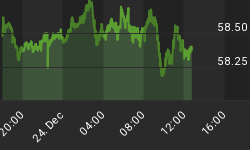Below is an extract from a commentary originally posted at www.speculative-investor.com on 2nd December 2007.
Last week's NovaGold news underlined the cost issues that are plaguing the gold mining industry. However, while the situation on the cost front is adding to the considerable angst that already exists within the ranks of gold-mining investors and is having an especially adverse effect on the demand for the most speculative gold stocks (the explorers and developers), it is important to keep the big picture firmly in mind.
The fact is that the gold sector of the stock market has failed to provide any leverage whatsoever to the gold price over the past 4 years because the price gain achieved by gold has not been substantially greater than the increase in the average cost of producing an ounce of gold or the increase in the cost of building a new mine. But that was then and this is now. The situation has been turning in favour of gold-mining stocks in general and exploration/development-stage gold-mining stocks in particular over the past six months, as evidenced by the major upward reversal in the gold/GYX ratio (gold relative to a basket of industrial metals).
What we are currently seeing are the effects on mining costs of years of rampant inflation (money-supply growth). It is quite likely, though, that costs are approaching an intermediate-term peak and will either soon begin to trend lower or, more likely, plateau near current levels. If our outlook is correct then this won't do much for the producers of base metals because the same factors that are expected to put a lid on mining costs over the next couple of years (slower economic growth and reduced financial-market liquidity) will also put downward pressure on base-metal prices. It should, however, do wonders for the producers of gold by bringing about a large rise in the price of gold relative to the cost of mining gold (a large rise in profit margins within the gold mining industry, that is). And if things pan out this way then we should eventually see a veritable feeding frenzy amongst the stocks of companies that have substantial in-ground gold.
Be aware, though, that the aforementioned feeding frenzy could still be up to 12 months away. For one thing, gold's current upward trend relative to most other commodities is still quite young -- gold only began to trend upward relative to the industrial metals in May of this year and was making new 52-week lows relative to oil as recently as 2 weeks ago -- so the large increase in gold-mining profit margins that we are anticipating probably won't start appearing in reported financial results until at least the second quarter of next year. For another thing, a strong US$ rebound is likely to provide a temporary obstacle at some point over the next few months.
The cost issue is not the only reason why most exploration/development-stage gold mining stocks haven't done as well as would be expected given the performance of the US$ gold price. These stocks have also been weighed down by gold's less-than-stellar performance in Canadian dollar terms, by the large amount of new equity issued over the past two years, and, perhaps most importantly of all, by the financial world's shift away from risk. However, we expect the first of these depressants to disappear within the coming 6 months due to a sustained upside breakout in the C$-denominated gold price. The second one will always be around, but there will be times when the supply of stock gets totally overwhelmed by the speculative demand for stock even though the share counts of most gold juniors will remain in strong upward trends. And the third depressant will stop being so as more and more people come to realise that gold in the ground in a politically secure location is a safe investment relative to most alternatives.
Intelligent speculators in exploration/development-stage gold mining stocks have made huge sums of money over the past several years and are very likely to make huge sums of money over the next several years. However, to play this game well you need a lot of patience because short periods of frenetic price increases are usually separated by very long periods when the stocks drift sideways or downward. The idea is to methodically build positions during the long periods of 'drift' and to harvest profits during the relatively short periods of speculative frenzy.
















